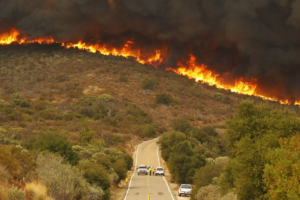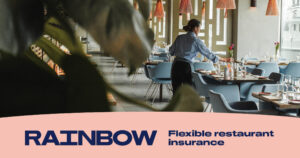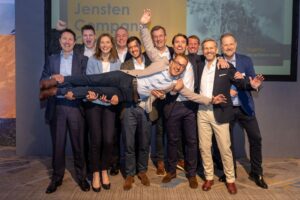Via Denise Garth, Majesco
Have you ever entered a store and the automatic door wasn’t working? Or, have you ever come to an escalator that is simply stopped, and you have to walk up or down the escalator? It feels strange when common automations don’t work. If you are like me, you might even experience that disoriented, woozy feeling when your mind thinks it is stepping onto something that is supposed to move.
Neural scientists have named this the “broken escalator” locomotor aftereffect and they have studied how and why the brain and body anticipates automations like it does. Their findings indicate that the mind learns very quickly how to adapt to new automations. Our minds are always seeking the easier way, and when it appears, our minds then adapt to the automation quickly. This makes sense. After all, who doesn’t like saving time and energy while accomplishing the same or better results?
Here’s the short lesson for insurers. People are “wired” to gravitate toward ease of use. They naturally exhibit streamlined behaviors, like making shortcuts in the grass between two sidewalks, and they quickly adopt automations that will make life easier. Just look how rapidly we adopted smart phones and how they are integral to our lives today—for both personal and business purposes!
If this is an unwritten “law” of human nature, then how must insurers, right now, prepare for an even more automated and streamlined future with the shortcuts that people will create whether we want them or not? Can we find any answers in the fast-moving, fully-connected ecosystems that already exist and are supported with a framework of innovative and compelling partnerships?
Streamlining and innovation happens with partnerships.
Let’s face it. In today’s world, exponential moves forward don’t happen without partnerships and partnerships are occasionally fostered out of “necessity.” COVID has given many industries a dose of necessity, but perhaps none has been more greatly affected than the restaurant industry. Daddy’s Chicken Shack, for example, in Old Pasadena, California, is using facial recognition kiosks to provide a completely touchless payment and service experience. Kiosks were already on the rise as a sort of automation that could reduce lines and front-line work for restaurants such as McDonald’s, that struggled to find workers. They may also improve sales and customer engagement. But the facial ID features from PopID took the kiosk from “data entry point” to “data security and touchless payment,” while completely streamlining the process for customers at the same time that it was keeping them safe.
Automated payments and touchless technology are the next escalators of our time. These technologies will react to our location and automatically create the circumstances that we need to accomplish our goals. They will rely on effective partnering. It takes more than a kiosk to automate a payment. In this case, it takes the facial recognition technology vendor (PopID), a card reading technology (Ingenico) and a payments hub vendor (Datacap), plus a dozen more payment-related companies that help to create an omni-channel payment ecosystem. This is not only streamlining through partnerships, but innovating as well.
Streamlined partnerships rely upon connections.
No process can become automated without connections. Relationship bridges need to be built in order to accomplish the goal of reducing transactional hurdles and headaches for customers. This takes organizational leadership. Innovative organizations will find the hurdles, prepare their systems to accept two-way connections, then take the initiative to use those connections in order to make life easier for the customer. This was emphasized in our life and auto customer research last year, where customers across all generations were interested in more than just a transaction … but an experience that brought together other connections to make their lives easier.
Google, for example, is carving out a huge connected customer experience space with its commuter assistance features that is a step towards a mobility experience we outlined in our auto customer research. Google Maps can now connect commuters with automated parking location and automated payment, bundled into its app. Regular commuters and city-dwellers know how much of a hassle parking has become in the last few years. In some ways, feeding a meter with coins was faster and easier than finding a pay station and figuring out how to use it. Payment technologies had taken us one step backward. So, Google integrated with two payment apps, Passport and ParkMobile to bring automated payment into the Google Pay experience. It adds this feature to its already robust transit fare automation within Google Maps. Google Waze is now testing touchless fuel payment at Exxon and Shell gas stations.
Connections are made more efficient through ecosystems.
Insurance may not fit cleanly into every retail experience, but it is absolutely ripe for fitting into customers’ lives and businesses in much the same way. The key for insurers is to think beyond a single transaction and be “partnership-ready,” which also means becoming “ecosystem-ready.” To keep pace with opportunities to streamline and opportunities to partner, insurers must take advantage of opportunities to transform.
Our customer research showed that insurance customers favor the idea of an integrated, holistic ecosystem approach for the interconnected tasks that make up their experience—whether for mobility (well beyond auto insurance) or for a combined life, health, wealth and wellness experience. Companies that can achieve an early entry into this space have a tremendous opportunity to create and grow a loyal base of current and new customers.
Given the nature of ecosystems, insurers can assume multiple roles, from owner of the unifying platform, to orchestrator of the products and services, or provider of products and services. What they achieve will depend on their ability to enter the market while it is still an uncrowded “white space.” Of course, this requires leadership with an appetite for taking informed risk, ability to move quickly, capacity to build partnerships within and outside of insurance, and strong technology capabilities.
Focusing on building partnerships and technology capabilities, insurers need next-generation solutions that are cloud-native, digital-first and ecosystem-ready by breaking the software down into thousands of consumable APIs, offering ready-to-use insurance apps as well as a network of third-party plug-and-play services and apps.
In my blog last year on ecosystems and engagement, we identified three key ecosystems that every insurer needs to consider as they look at the future of insurance: The mobility ecosystem, the lifestyle ecosystem and the financial ecosystem—and more are emerging all the time. Insurance already touches life in so many moments of the day, but how should insurers look at their future capabilities in light of fitting into these key ecosystems? Where can they place new products that fit seamlessly into these life streams and how can they develop and maintain a framework that allows for quick reactions to customer trends? Preparing to connect fulfils two insurer responsibilities:
- Necessary growth for the future
- The ability to fluidly handle unplanned events such as COVID, catastrophic weather events and the surprise hazards of supply-line disruption.
Insurers will find, as they prepare, that every connection they create makes the organization a little more resilient. Channels will grow organically. Products will be launched with less delay. Customers will be served in automated ways that suit them, with relevance and accuracy. Learning, through greater data exchange, will yield improved experiences in claims-related risk.
Incumbents in all industries are at a disadvantage when preparing for the future. This isn’t unique to insurance. Monolithic systems and processes can seem insurmountable in light of startups and InsurTechs that can quickly adapt and fit into modern automations and streamlined networks. Many of them are built-to-fit anywhere. They find their success in networking.
The insurance industry status quo is rapidly eroding and is being re-defined with a growing number of influences, upending decades of business assumptions. In this new decade, new insurance opportunities exist for those who leverage next gen platforms, participate in a broader ecosystem and the growing insurable opportunities.
Insurers, who have been slow to see data’s real value in the value chain, are slowly coming to understand that every customer experience holds data. (Read more in my blog, Underwriting in 3D: Using Data to Adapt and Improve Life Insurance Sales.) Data’s value to insurers is tightly connected to an ecosystem-enabled growth model. Data ecosystems have their own hurdles, however, such as already-established (entrenched) players, a point recently made by McKinsey.
“If the market already has a large, established player, companies may find it difficult to stake out a position. To choose the right partners, executives need to pinpoint the value they can offer and then select collaborators who complement and support their strategic ambitions.”
Looked at in the right light, this is more of an opportunity to innovate, than a hurdle, especially within the insurance industry, where large, established players and “younger” insurers have been playing in the same markets for a long time. Insurance is large enough that there’s always room for innovators with initiative. The same McKinsey article points out that data ecosystems “can provide a golden opportunity” for traditional incumbents in their bid to ward off competition from agile upstarts.
Insurers must prepare. Humans are wired to use automation and streamline experiences. How can we further automate payments? How can we automatically begin providing insurance when people walk or drive or fly into situations where they need insurance? Streamlining and innovation are made possible through partnerships. Partnerships are enabled by ecosystem-ready insurance processes.
Source: Insurance Innovation Reporter








